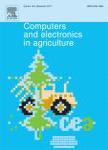版权所有:内蒙古大学图书馆 技术提供:维普资讯• 智图
内蒙古自治区呼和浩特市赛罕区大学西街235号 邮编: 010021

作者机构:China Agr Univ Natl Innovat Ctr Digital Fishery Beijing 100083 Peoples R China China Agr Univ Key Lab Smart Farming Technol Aquat Anim & Livesto Minist Agr & Rural Affairs Beijing 100083 Peoples R China Beijing Engn & Technol Res Ctr Internet Things Agr Beijing 100083 Peoples R China China Agr Univ Coll Informat & Elect Engn Beijing 100083 Peoples R China China Agr Univ Coll Agron & Biotechnol Beijing 100193 Peoples R China China Agr Univ Natl Maize Improvement Ctr Beijing 100193 Peoples R China
出 版 物:《COMPUTERS AND ELECTRONICS IN AGRICULTURE》 (农用计算机与电子设备)
年 卷 期:2022年第199卷
核心收录:
学科分类:09[农学] 0901[农学-作物学] 0812[工学-计算机科学与技术(可授工学、理学学位)]
基 金:National Natural Science Foun-dation of China
主 题:Hyperspectral imaging Maize seed Incremental learning Convolutional autoencoder Biomimetic pattern recognition
摘 要:There are many maize seed varieties circulating on the Chinese market, some varieties will be added and eliminated by the government every year, and fake varieties cannot be exhaustively listed. Furthermore, the updating of some varieties requires retraining the entire model, which is time-consuming and laborious. This poses a huge challenge for the authenticity identification of varieties and online model updating. Herein, hyperspectral imaging (HSI) combined with incremental learning (IL) was used to solve this problem. A novel radial basis function-biomimetic pattern recognition (RBF-BPR) model for IL was proposed and compared with one-class support vector machine (OCSVM) and BPR models under two test schemes. Hyperspectral images of five varieties of maize seeds were collected, and convolutional autoencoder (CAE) was used to extract features to remove redundant information and improve the generalization ability of models. A unique hybrid model was designed for each variety respectively, and the IL process was simulated. In two test schemes, the overall correct acceptance rate (CAR) for the known varieties and the overall correct rejection rate (CRR) for the unknown varieties of CAE-RBF-BPR model both reached 100%, which was superior to CAE-OCSVM and CAE-BPR models. Especially after RBF was used to map data, the performance of RBF-BPR model had a qualitative improvement compared with the original BPR model. In summary, the proposed method can realize IL without accessing the old classes data, while meeting the requirements of identifying known varieties and rejecting unknown varieties. In addition, if some varieties are eliminated by the government in the future, the corresponding models can also be removed form the whole system. The combination of such method and HSI has a broad application prospect in the identification of maize seed varieties, thus avoiding the trouble of retraining entire model when some maize seed varieties need to be updated.